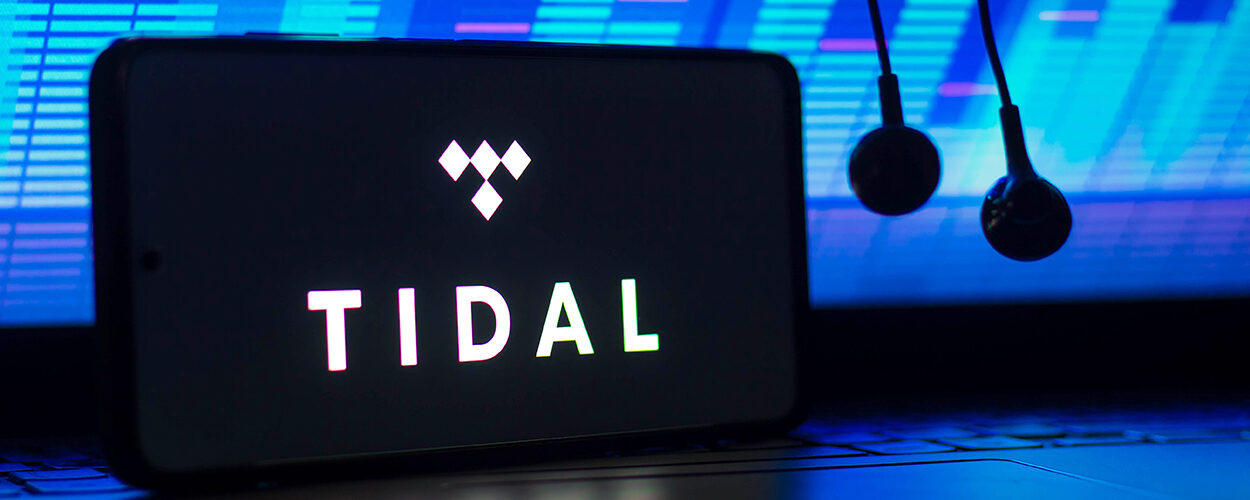This website uses cookies so that we can provide you with the best user experience possible. Cookie information is stored in your browser and performs functions such as recognising you when you return to our website and helping our team to understand which sections of the website you find most interesting and useful.
Business News Digital Labels & Publishers
Tidal ends direct artist payouts scheme, commits more money to emerging artists programme
By Chris Cooke | Published on Wednesday 1 March 2023

The CEO of Tidal has announced that the company is phasing out the direct artist payouts scheme it first unveiled in late 2021, instead committing to pump more money into its programme supporting emerging artists. It means that both the royalty innovations it first teased in November 2021 – the other being user-centric pay-outs – have now been dropped.
Those innovations were first introduced as part of a rejig of Tidal’s subscription packages. Having been a pioneer of the model where higher quality audio was available for a higher price, it ultimately followed the lead of Apple and Amazon in making that level of audio quality available to all on its standard 9.99 subscription tier.
The higher price tier, which was rebranded as Tidal Hifi Plus, became the subscription package for people who wanted super super quality audio, employing all that Dolby Atmos nonsense. Although the other thing that set the revamped Hifi Plus apart was the innovations around how artists would get paid.
First, Tidal said it planned to adopt a user-centric approach when sharing out subscription income from that tier.
And secondly, there was the direct artists payouts scheme. Under that scheme, Tidal committed to pay a bonus – on top of any royalties due – to each subscriber’s favourite artists. That bonus would come out of Tidal’s share of the income and would be paid directly to the artists oblivious of any label or distribution deal they had in place.
Tidal shifting to a user-centric approach for royalty distribution, even only on its Hifi Plus tier, would require the approval of the record labels, which meant that plan could not be introduced overnight.
There has, of course, been much debate in recent years over whether or not all streaming services should employ a user-centric approach. Currently services pool all subscription monies in any one market each month and then allocate a cut of that money to each track based on its consumption share across the service. With user-centric, each subscriber’s payment would be allocated to the specific tracks they listened to that month.
The labels are officially agnostic on whether the current system or a user-centric system is better. That said, in reality the majority of labels aren’t really that keen on user-centric, because if they were, it would have been implemented by now.
Which means that, when last month Tidal announced a partnership with Universal Music to investigate new models for distribution streaming royalties, it wasn’t surprising when the streaming firm confirmed that user-centric would not be part of that investigation, and was no longer part of the plan for the evolution of Hifi Plus.
However, direct artist payouts could be introduced without the labels approval, as the bonus payments were coming out of Tidal’s cut of the money. The streaming service just needed the artists who were likely to benefit – ie who were the favourite artists of Hifi Plus subscribers – to sign up to receive the extra cash. And so that part of Tidal’s plan for Hifi Plus went into operation.
“We enrolled 70,000 artists and distributed $500,000”, Tidal boss Jesse Dorogusker revealed in a tweet yesterday. However, that was “far short of our goal”. And so, “we’ve decided to end direct artist payouts and do something with higher impact”.
“The direct artist payouts programme focused only on a listener’s number one artist”, he went on, “which left much, much less room for emerging artists to get paid. Starting April, we’ll no longer commit a percentage of HiFi Plus membership to top-listened artists. Instead, we’ll sharpen our focus on Tidal Rising”. That is the streaming firm’s programme for supporting new talent.
“Changing course means we will put more funds (ten times what we distributed via direct artist payouts) into the Tidal Rising programme”, he added, “backing and celebrating emerging artists through education, custom promotion, and future direct-funding, so they can build and grow their careers in music”.
Dorogusker also pointed out that, because the core streaming model is a revenue share model, artists and their business partners earn more when Hifi Plus subscribers play their music – even without user-centric and direct artist payouts – because there is more money in the pool to start with.
And while the user-centric and direct artist payouts experiments unveiled in 2021 may now both be over, don’t be thinking there won’t be more experiments to come. Even if those future experiments presumably will need the support of its new experimental partner Universal Music.
“To artists”, Dorogusker concluded, “the Tidal team continues to experiment with ways to unlock better economic value from streaming for you. To our loyal Tidal members: thank you for being fierce music fans and artist advocates while we continue to build the best home for music and culture”.





